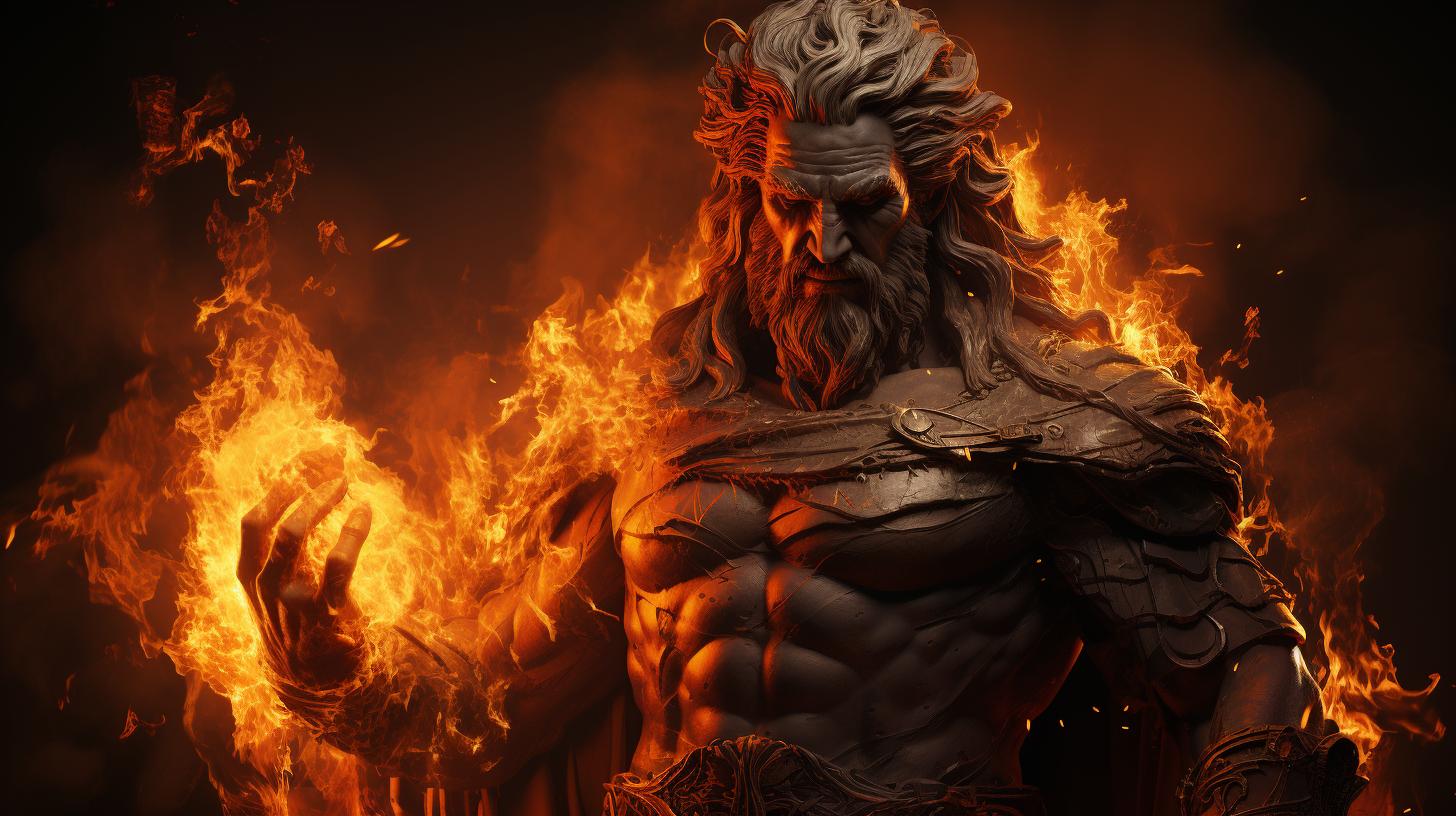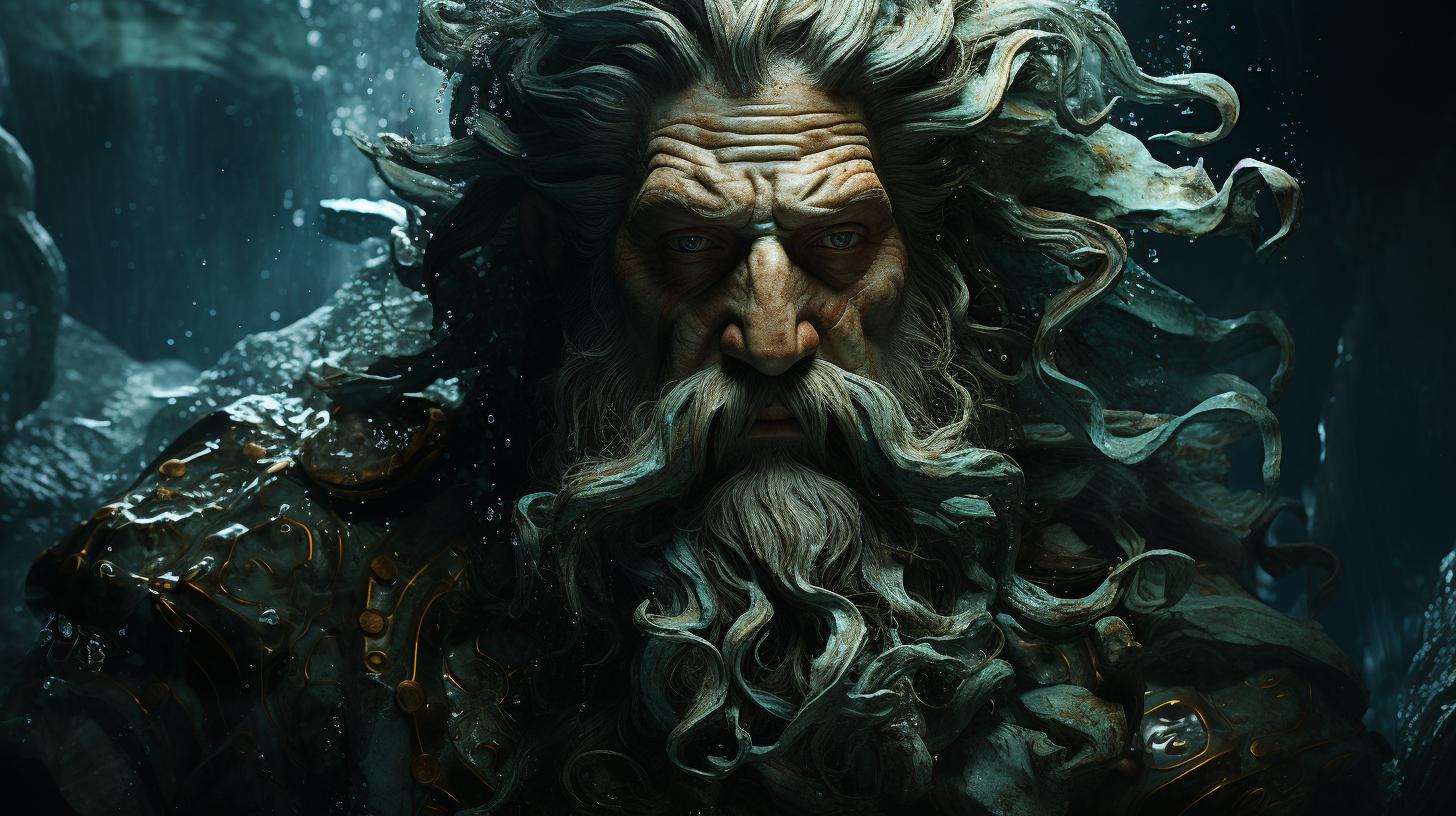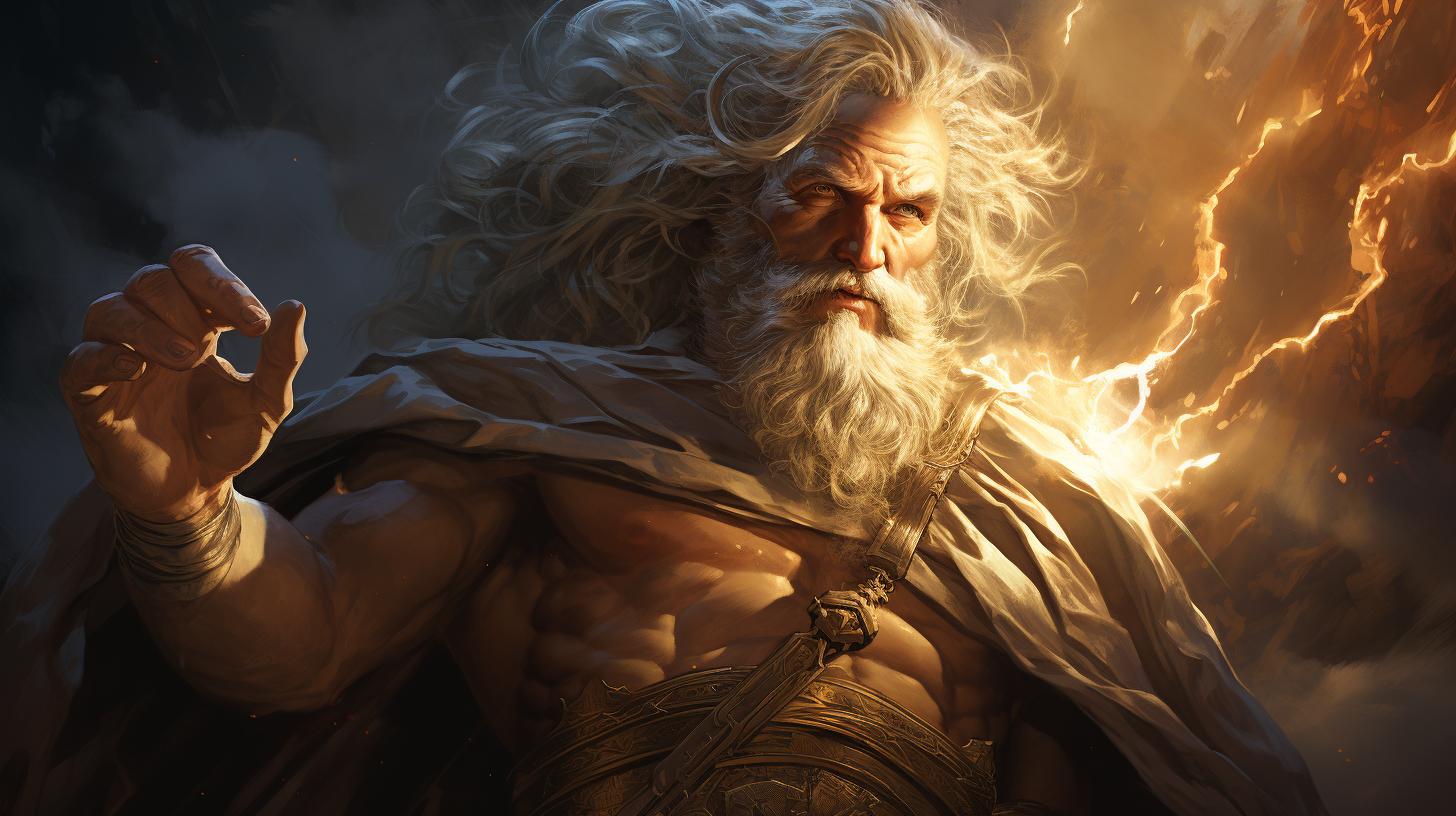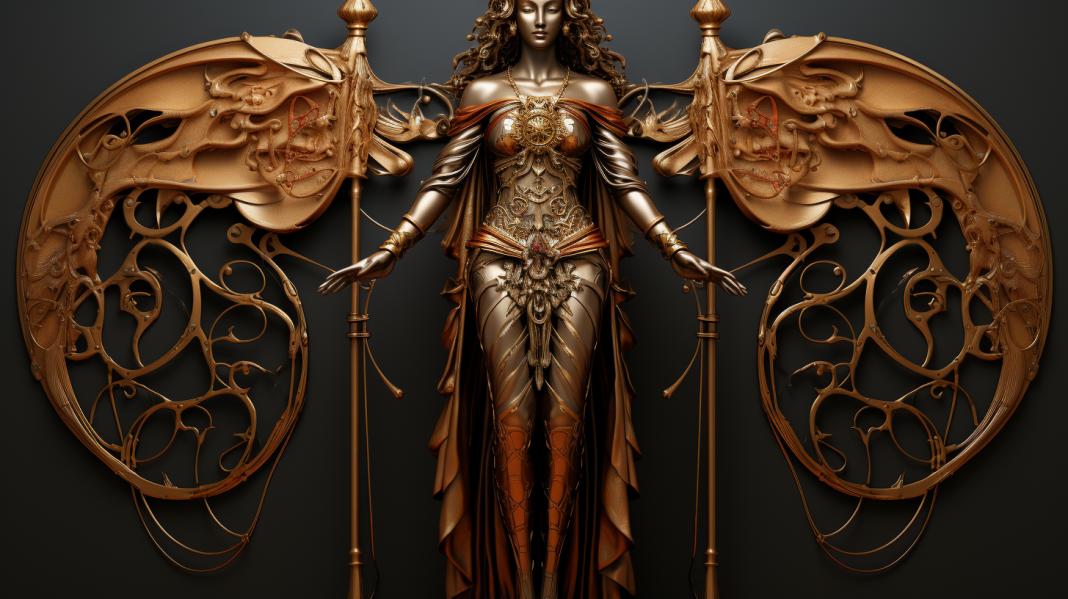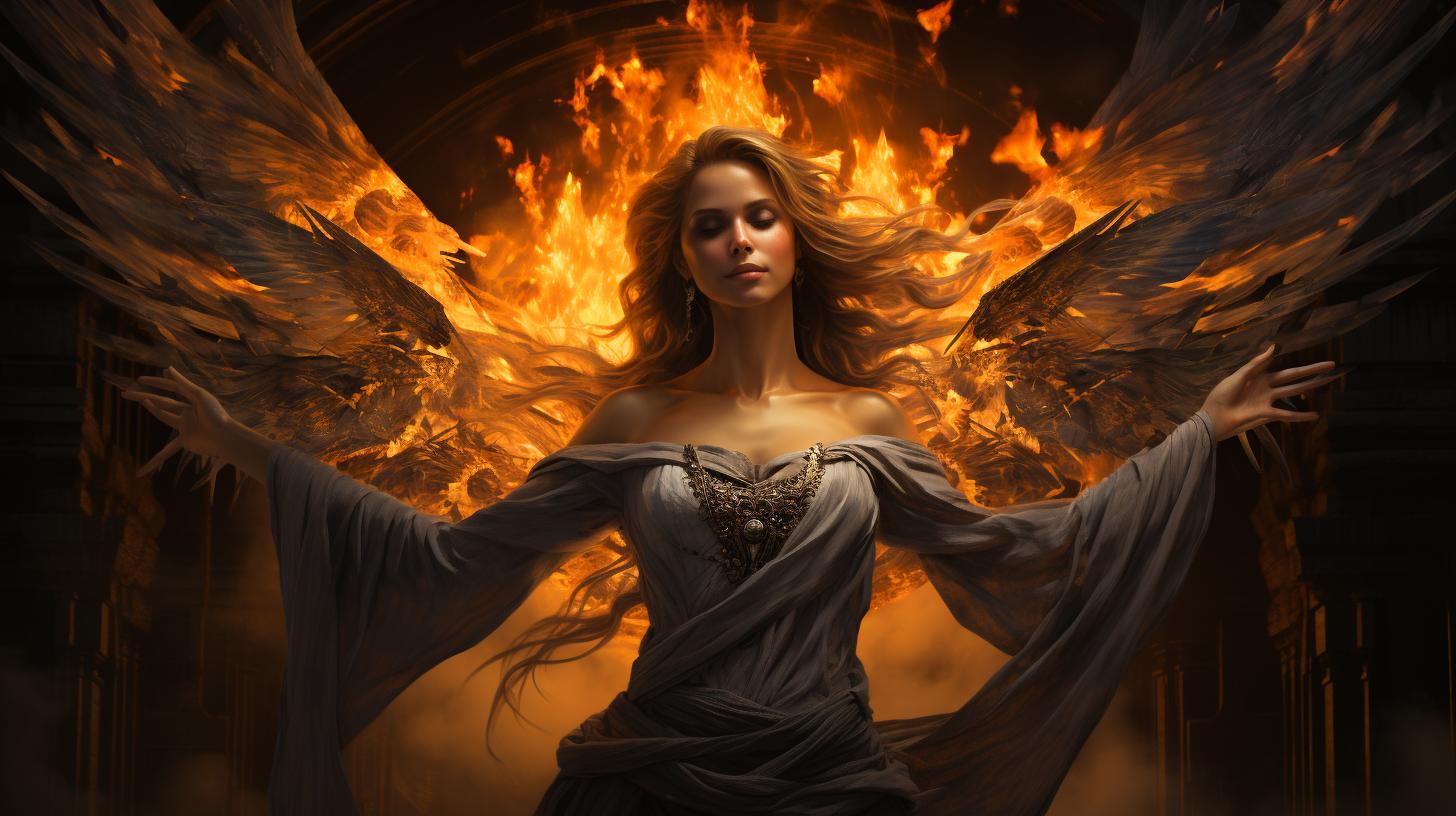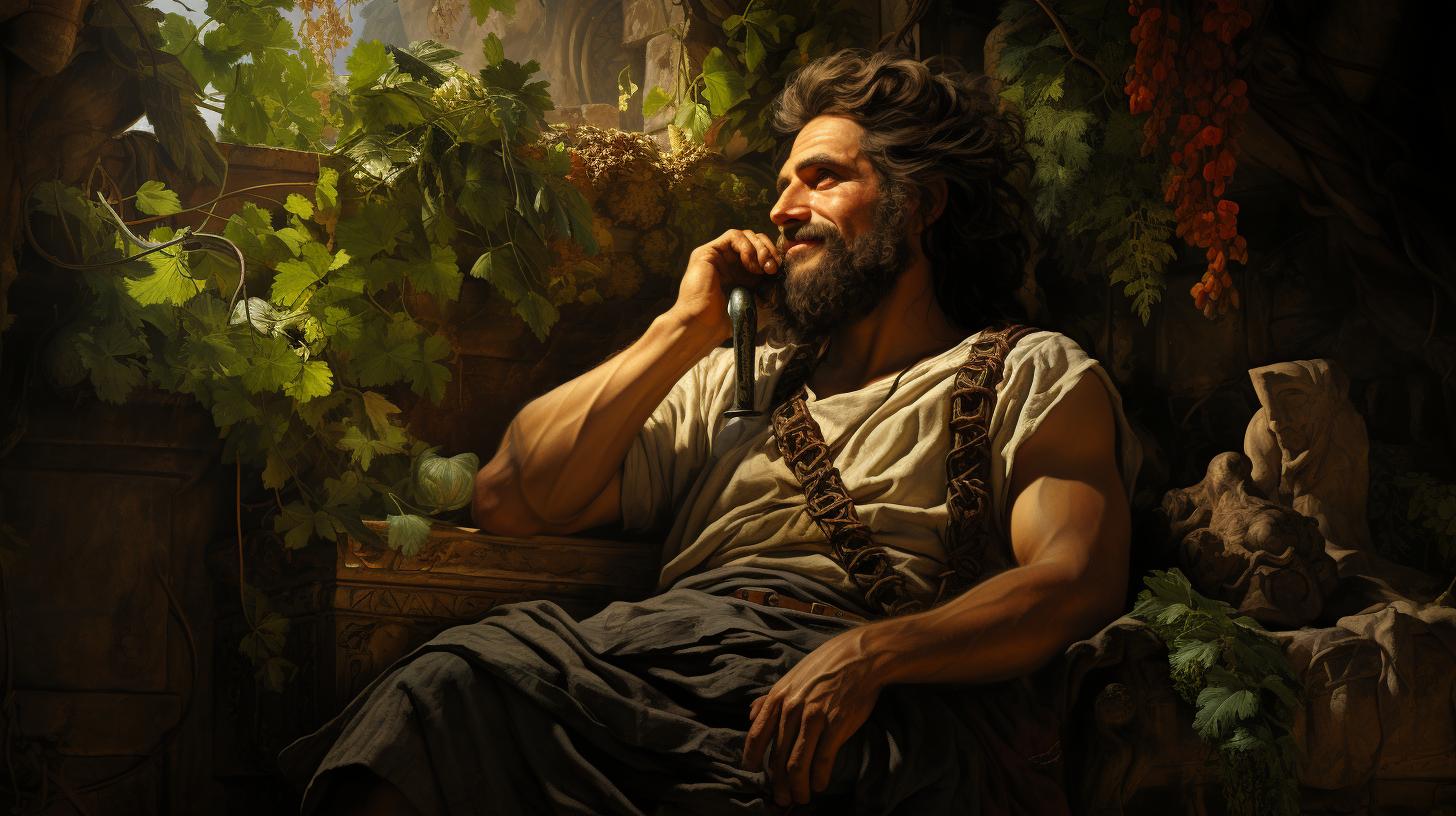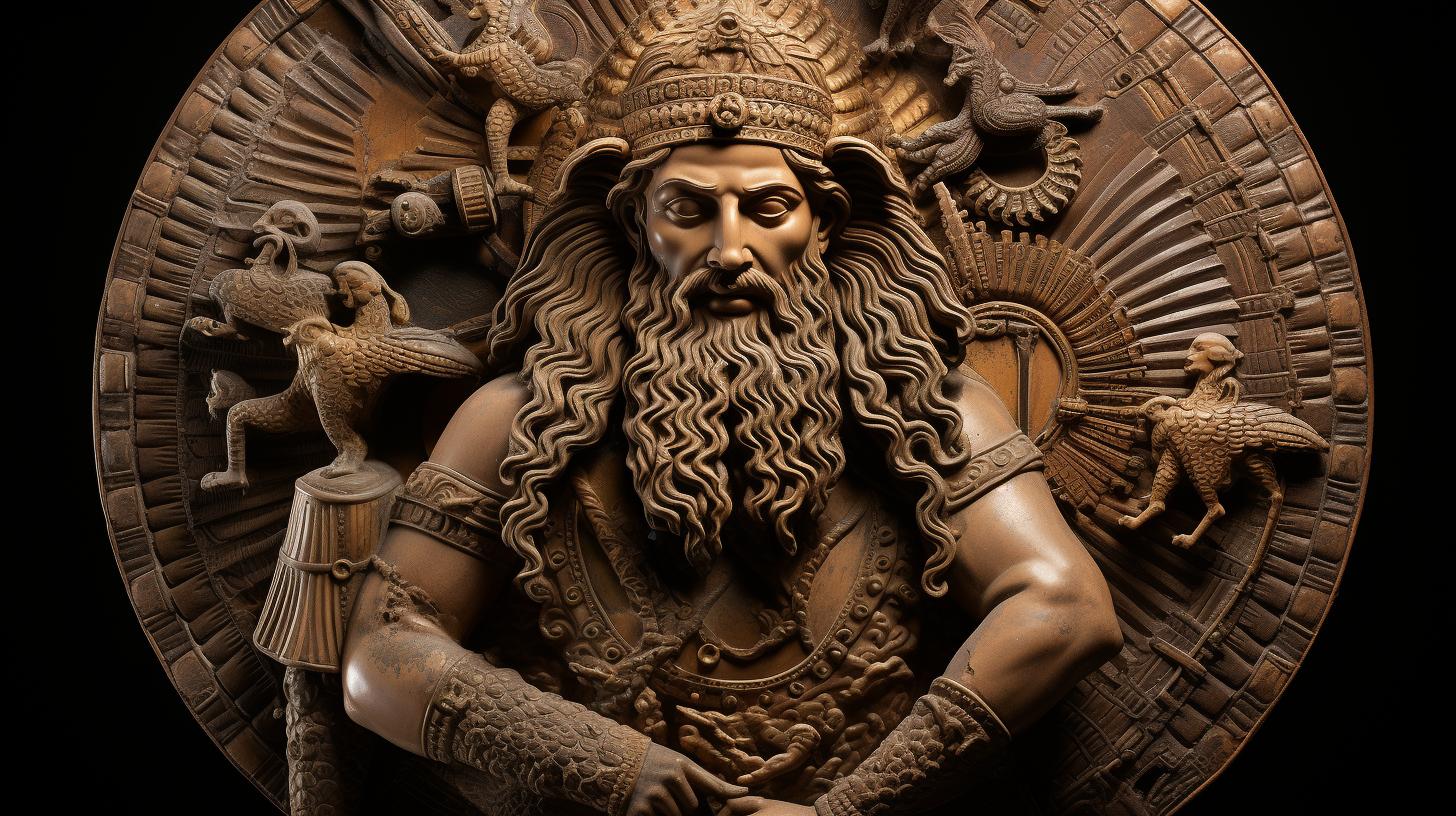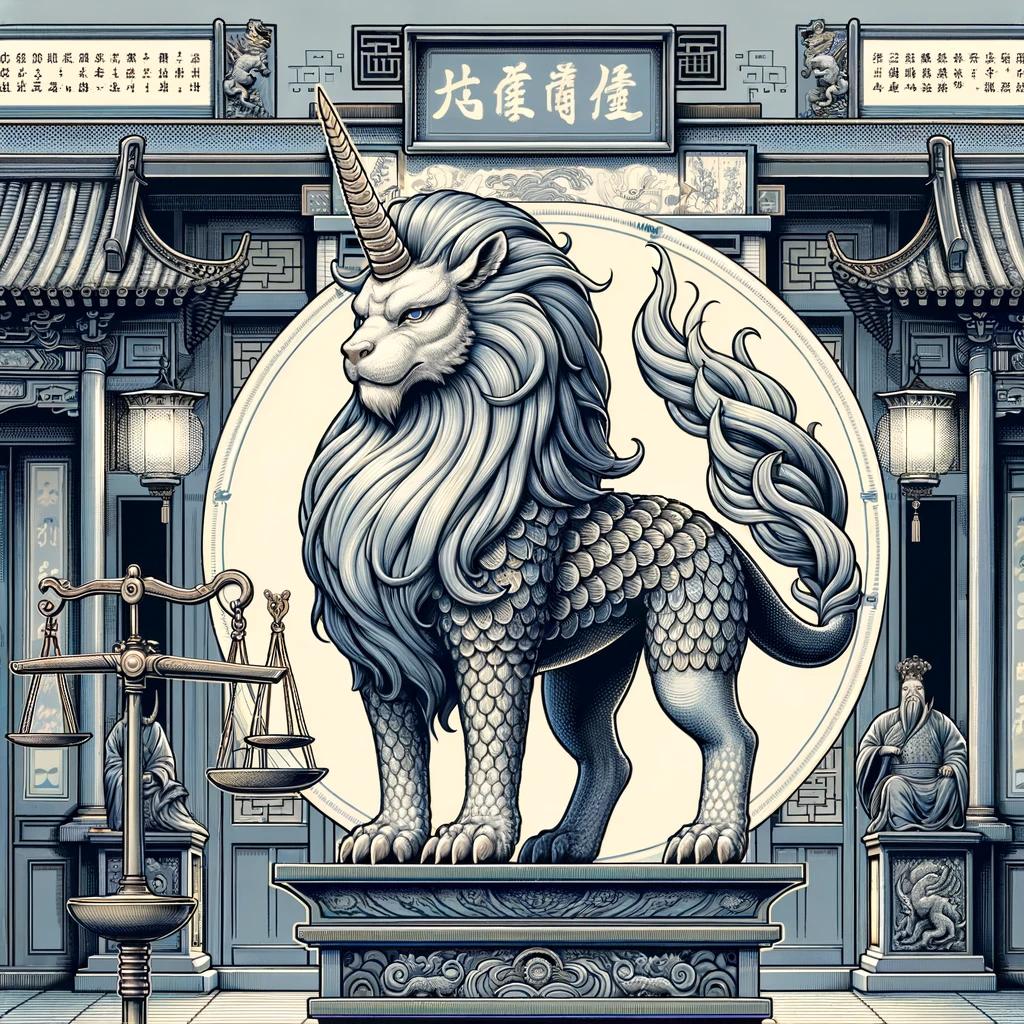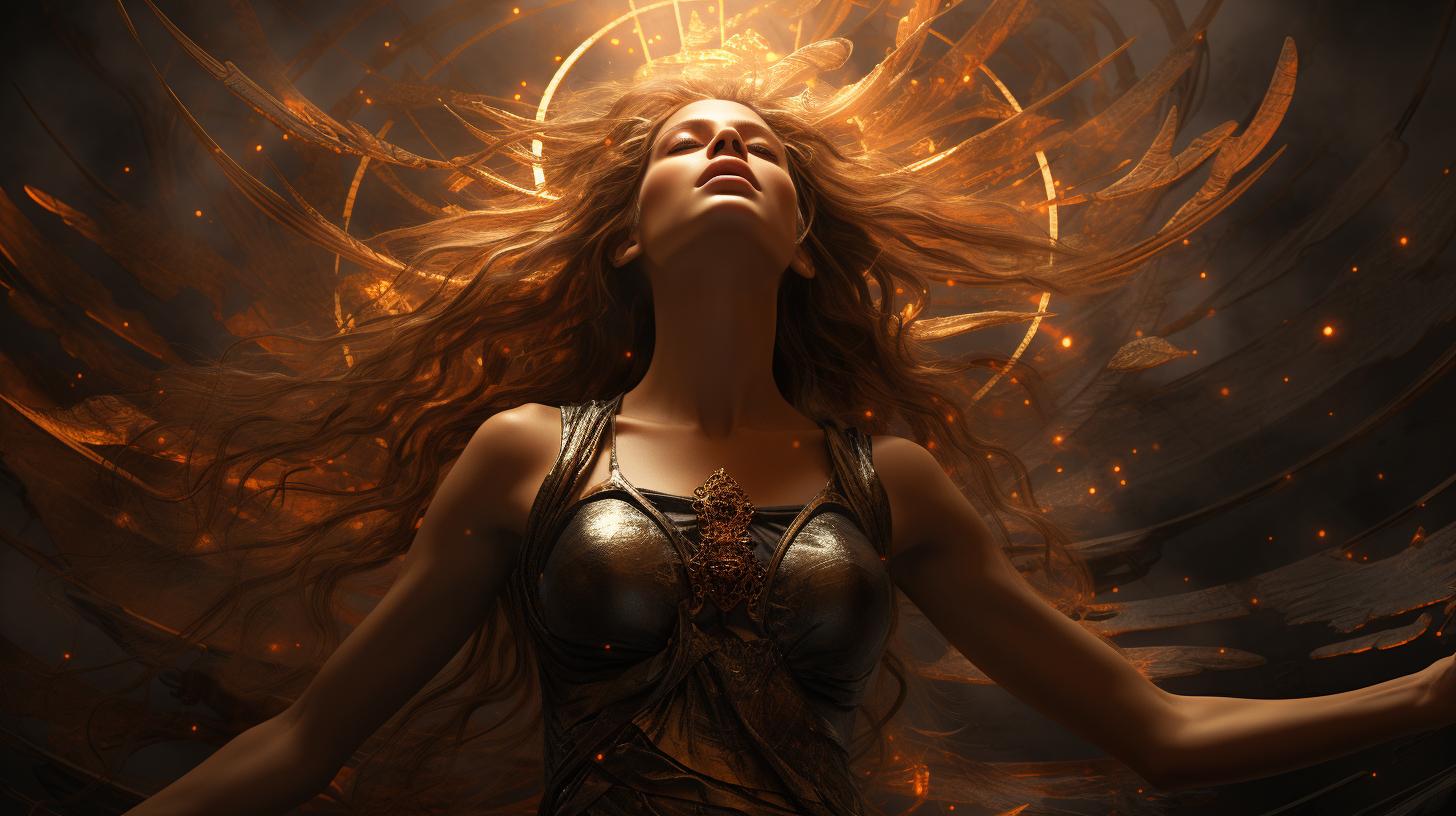Sethlans Etruscan Mythology: Exploring the God of Forge and Metalwork
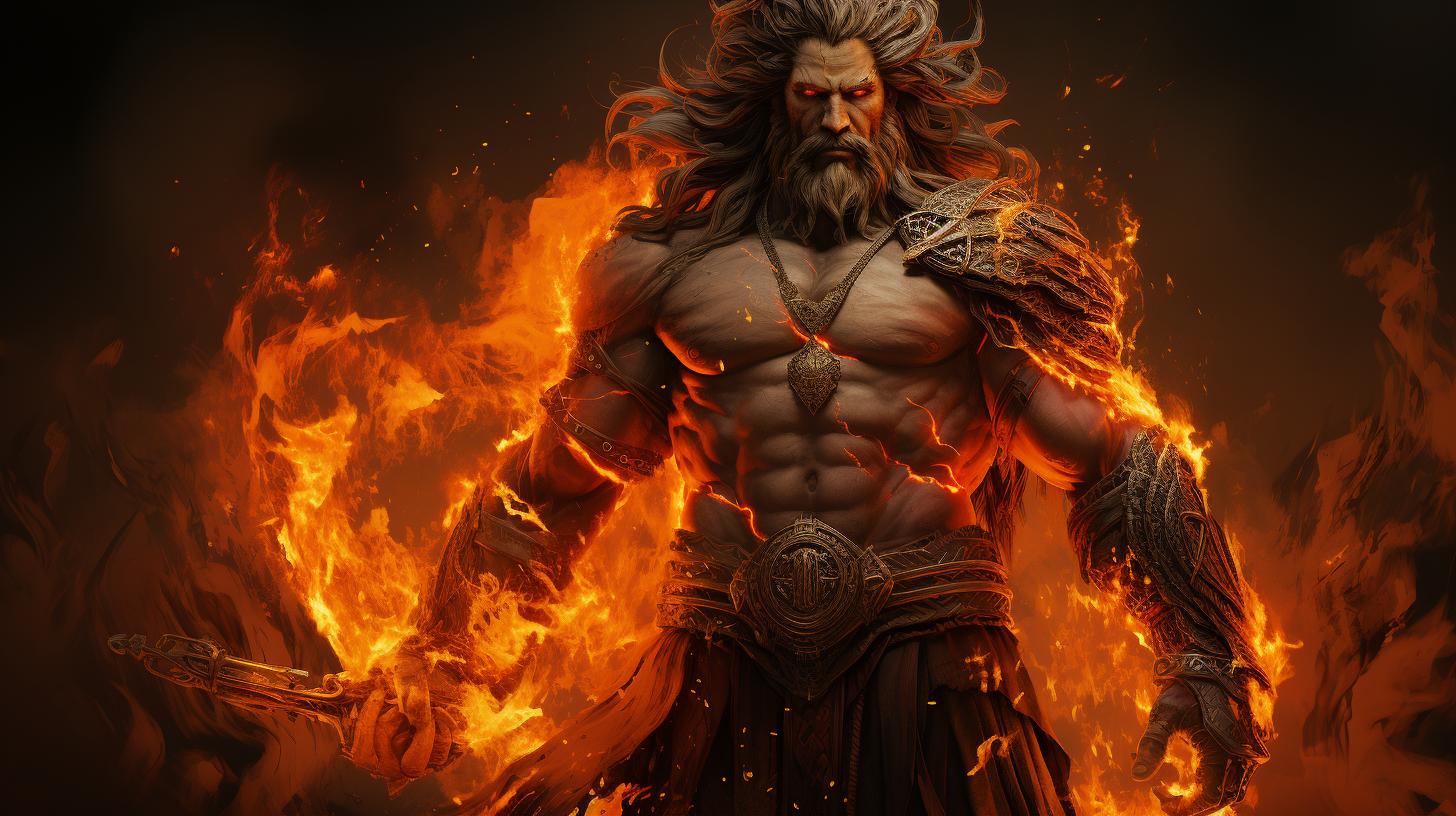
Sethlans Etruscan mythology is a fascinating realm of ancient beliefs and legends surrounding the god of forge and metalwork. Originating from the Etruscan civilization, Sethlans held great significance in their religious and cultural practices.
He also shares intriguing connections with Greek, Roman, Norse, and Irish mythologies. Across different regions and time periods, Sethlans is depicted as a master craftsman, specializing in creating magical jewelry, weapons, and armor.
Exploring the mystery and influence of Sethlans in European folklore and modern interpretations contributes to a deeper understanding of this enigmatic deity.
Origins of Sethlans: Etruscan Metalworking Deity
Sethlans, the Etruscan god of forge and metalwork, holds a significant position in Etruscan mythology and religion. As an ancient civilization, the Etruscans developed their own unique mythological beliefs and religious practices.
Within this context, Sethlans emerged as a deity closely associated with craftsmanship and metallurgy.
Etruscan Mythology and Religion
At the heart of Etruscan mythology lay a pantheon of gods and goddesses who governed different aspects of life, including the realms of nature, fertility, and human activities. Sethlans played a prominent role within this divine hierarchy as the patron god of metalworkers and artisans.
Sethlans in Etruscan Culture and Society
Sethlans’ influence extended beyond his religious significance. In Etruscan society, the art of metalworking held great importance, and blacksmiths were revered for their skills. Sethlans, as the deity associated with this craft, held a central place in Etruscan culture, symbolizing innovation, craftsmanship, and the transformative power of fire.
Connections to Greek and Roman Mythology
It is worth noting that Etruscan mythology shared connections with its Greek and Roman counterparts due to cultural exchanges, resulting in the assimilation and adaptation of deities. In the case of Sethlans, he is associated with the Greek god Hephaestus and the Roman god Vulcan. These likenesses highlight the intermingling of mythologies and the universal themes within the ancient world.
Sethlans in Etruscan and Norse Mythology
Sethlans, the god of forge and metalwork in Etruscan mythology, holds fascinating connections to Norse mythology as well. These rich cultural intersections shed light on the importance of Sethlans across different civilizations.
Sethlans and Wayland: Cross-cultural Similarities
There are striking similarities between Sethlans and Wayland, a prominent figure in Norse mythology. Both deities are renowned craftsmen, skilled in the creation of enchanting jewelry, powerful weapons, and extraordinary armor.
Their cross-cultural parallels highlight the shared reverence for the art of metalworking.
The Role of Sethlans in Norse Mythology
While Sethlans’s presence in Norse mythology is not as extensive as in Etruscan lore, there are notable associations. In certain Norse legends, Sethlans is referenced as Völundr, an elf prince revered for his craftsmanship.
He is credited with forging mystical artifacts and contributing to heroic tales, further emphasizing the significance of Sethlans in Norse mythological narratives.
Sethlans as the Prince of the Elves in Völundarkviða
In the ancient Icelandic poem Völundarkviða, Sethlans is depicted as the Prince of the Elves, showcasing his prowess in the art of jewelry, weapons, and armor.
This enchanting tale portrays Sethlans as an elf with extraordinary skills, crafting exquisite creations with magical qualities.
Sethlans’ Skills in Jewelry, Weapons, and Armor
Sethlans’ mastery in jewelry, weapons, and armor is prominently highlighted in Völundarkviða. He is renowned for his ability to create enchanting and powerful artifacts that possess extraordinary qualities. Through his craft, Sethlans weaves intricate designs, infusing his creations with magic capable of enhancing their wearer’s abilities.
Comparisons to Hephaestus and Vulcan
In the realm of comparative mythology, Sethlans bears resemblance to the Greek god Hephaestus and the Roman god Vulcan. Like them, Sethlans is celebrated for his expertise in metallurgy and his role as a divine blacksmith.
While cultural variations exist, these deities share a common narrative as skilled artisans who forge remarkable creations with divine attributes.
Exploring the connections and divergences between Sethlans, Hephaestus, and Vulcan provides valuable insights into the overarching theme of divine craftsmanship and the cultural significance attributed to these legendary figures.
Sethlans in Irish Legends: Cuillean, the King Forger
In Irish mythology, Sethlans takes on the persona of Cuillean, the King Forger. Cuillean is a renowned figure known for his exceptional skills in crafting magical weapons and armor for the kings and heroes of Ulster.
Legends portray him as a master of his craft, creating intricate and powerful artifacts that possess extraordinary qualities and abilities.
Cuillean’s Magical Weapons and Armor
Cuillean’s creations are legendary, renowned for their exceptional craftsmanship and magical properties. His weapons are said to be unmatched in strength and effectiveness, capable of overcoming any foe. His armor is believed to offer impenetrable protection to those who wear it, deflecting even the most powerful blows.
The magical nature of Cuillean’s weapons and armor adds an extraordinary element to Irish legends, further cementing his reputation as a skilled forger and a significant figure in mythological tales.
Connections to Irish Mythology and the Tuatha Dé Danann
Cuillean’s significance extends beyond his expertise in metalworking.
He is believed to have connections to the ancient gods of Ireland, including the mythical race known as the Tuatha Dé Danann. As a forger, Cuillean is often associated with the divine craft and its connection to the gods.
His association with the Tuatha Dé Danann suggests a deeper symbolic meaning, linking his role as a master blacksmith to the divine and supernatural realms. Cuillean’s presence in Irish mythology adds richness and complexity to the lore surrounding Sethlans and his influence on ancient Irish culture.
Sethlans in European Folklore and Medieval Texts
Sethlans, the Etruscan god of forge and metalwork, holds a significant place in European folklore and medieval texts. Various accounts highlight Sethlans’ role as a creator of special crafts, including jewelry, weapons, and armor.
These exceptional creations often possess magical qualities, making them coveted by heroes and rulers alike.
Sethlans’ Role as a Creator of Special Crafts
Sethlans is revered as a skilled craftsman, renowned for his ability to fashion extraordinary crafts. Legends and tales abound with stories of Sethlans forging weapons and armor that possess enchanting properties.
Through his craftsmanship, he imbues these creations with magical abilities, making them powerful assets for their wielders. The tales portray Sethlans’ creations as instrumental in battles and adventures, often turning the tide in favor of their owners.
The significance of Sethlans’ creations extends beyond their magical properties. They symbolize the Etruscan culture’s expertise in metalworking and their appreciation for exquisite craftsmanship. Sethlans’ role as a creator of special crafts further emphasizes the value placed on skill, artistry, and the blending of practicality with beauty in Etruscan society.
Sethlans’ Regional Variations and Names
Sethlans is known by different names in various regions and cultures across Europe. In English, he is sometimes referred to as Wayland or Weyland. In Icelandic and Old Norse, he is known as Völundr or Velent.
In Old High German, he goes by the name Wiolant. Even in medieval Latin, he is mentioned as Guielandus. These varied names reflect the breadth of Sethlans’ influence and the diversity of cultural interpretations surrounding his character and legend.
Furthermore, Sethlans’ regional variations extend beyond mere names. These variations encompass different aspects of his story, attributes, and the roles he plays in various mythologies. Exploring these regional variations provides a deeper understanding of Sethlans’ place in different cultural contexts and demonstrates the widespread significance of his legend throughout Europe.
- Etruscan: Sethlans
- English: Wayland or Weyland
- Icelandic/Old Norse: Völundr or Velent
- Old High German: Wiolant
- Medieval Latin: Guielandus
These regional variations and names shed light on how Sethlans’ legend transcended geographical boundaries, leaving a lasting impact on European folklore and medieval texts.
Sethlans in Modern Interpretations and Pop Culture
Sethlans, the enigmatic deity of Etruscan mythology, continues to captivate the imagination of artists, writers, and creators in contemporary times. His influence can be seen in various forms of art, literature, games, films, and comics.
Let’s explore the impact that Sethlans has had on modern interpretations and pop culture:
Sethlans’ Influence on Contemporary Art and Literature
Sethlans’ role as the god of forge and metalwork makes him a compelling figure to depict in visual arts and explore in literary works. Artists have been inspired by his craftsmanship and magical creations, often portraying him as a master blacksmith in their artworks.
Writers, too, have embraced Sethlans’ mythological significance, incorporating him into their stories and novels, weaving tales of power and creation.
Depictions of Sethlans in Games, Films, and Comics
The allure of Sethlans’ character has also made its way into the immersive worlds of games, films, and comics. Several video games have featured Sethlans as a formidable character, allowing players to engage with his skills in weapons and armor creation, and explore the mythos surrounding him.
Films and animated adaptations have taken inspiration from Etruscan mythology, showcasing Sethlans’ craftsmanship and his integral role in shaping epic narratives. Moreover, comics and graphic novels have delved into the legends of Sethlans, giving readers a visual interpretation of his story.
In summary, Sethlans’ presence extends beyond ancient mythology, as his captivating persona continues to inspire creativity in contemporary art, literature, games, films, and comics. Artists and writers have explored his role as a master craftsman, while games, films, and comics have depicted him as a powerful figure in immersive storytelling.
The enduring appeal of Sethlans in modern interpretations and pop culture is a testament to the ongoing fascination with his mythological legacy.
7. Unraveling the Legends: Examining Sethlans’ Mystery
Sethlans, the enigmatic deity of Etruscan mythology, has captivated scholars and researchers for centuries. Through extensive analysis, various theories and research have shed light on the mysteries surrounding Sethlans and his significance in ancient Etruscan culture.
Scholars’ Theories and Research on Sethlans
1. Sethlans as a Symbol of Etruscan Metalworking Excellence
Some scholars propose that Sethlans’ association with forge and metalwork represents the Etruscans’ reverence for craftsmanship and their advanced knowledge of metallurgy.
His role as a creator of magical jewelry, weapons, and armor further supports this theory.
2. Sethlans as a Cultural Link between Etruscan and Norse Mythologies
Researchers have explored the parallel between Sethlans and Norse figures such as Wayland the Smith.
By examining the cross-cultural similarities, they seek to uncover possible connections and influences between the two mythological traditions.
Debates and Controversies Surrounding Sethlans
1. Sethlans’ Origin and Relationship with Other Etruscan Deities
Despite extensive research, the exact origin and divine lineage of Sethlans remain a topic of debate. Scholars continue to discuss and analyze his association with other Etruscan gods and goddesses, unraveling the intricate connections within the pantheon.
2. Interpretations of Sethlans in Modern Context
There is ongoing debate regarding the adaptation of Sethlans’ mythology in contemporary art and literature. Some argue that modern interpretations distort or oversimplify his character, while others appreciate the imaginative reinterpretations that bring ancient myths into the present.
Further exploration and scholarly analysis of Sethlans’ mystery continue to shape our understanding of this elusive deity and his role in Etruscan mythology.
Connections to Other Etruscan Deities and Figures
Sethlans’ Relationships with Other Gods and Goddesses
Sethlans, the Etruscan god of forge and metalworking, had significant connections with other deities and figures in the pantheon. These relationships shed light on his role and influence within Etruscan mythology.
Some noteworthy connections include:
- Tinia, the supreme god in Etruscan mythology, was often associated with Sethlans. Together, they represented the power of creation and craftsmanship.
- Uni, the Etruscan goddess of marriage and fertility, was believed to protect Sethlans and his creations, symbolizing the bond between craftsmanship and prosperity.
- Culsu, the Etruscan goddess of death and prophecy, played a part in Sethlans’ mythology, as his skills in metalworking were also linked to the creation of talismans and artifacts used in rituals related to the afterlife.
Sethlans’ Place in Etruscan Cosmology and Creation Myths
Within the Etruscan cosmology and creation myths, Sethlans held a significant position.
He was often considered a central figure in the mythology’s understanding of the origins of the world and humanity. Key aspects include:
- As the god of forge and metalworking, Sethlans was believed to have played a crucial role in the creation of the cosmos itself, shaping the elements and crafting the world with his skilled hands.
- Mythological tales depicted Sethlans as the artisan responsible for fashioning the first humans.
It was believed that he carefully crafted each individual, infusing them with his craftsmanship, determination, and creativity.
- Sethlans’ imagery was often associated with fire, representing his transformative and creative powers. Fire, as a symbol of purification and renewal, was intricately tied to Sethlans’ role in both cosmological and human creation.
Exploring Sethlans’ relationships with other Etruscan deities and his significance in cosmological and creation myths provides a deeper understanding of his role in Etruscan religion and culture.
These connections showcase the importance attributed to craftsmanship and its divine origins in the Etruscan worldview.

